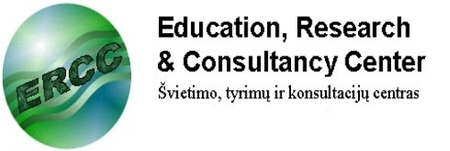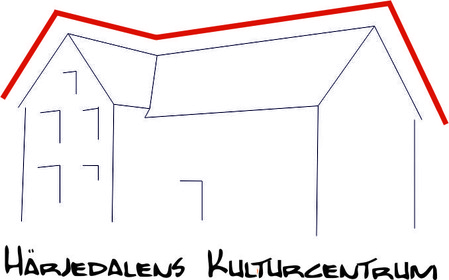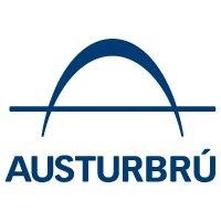
Coordinating organization – Education, Research & Consultancy Center (ERCC) Country: Lithuania Website: www.ercc.lt Phone: +370 616 36628 e-mail: [email protected] Non-governmental organization Education, Research & Consultancy Centre was founded in 2006 by experts of educational sector and European projects. It’s operating in the field of informal adult education and research. For the time being the main activities of ERCC are implementation of various international mobilities, culture visits, guided tours, trainings and projects. About area Western Lithuania is located near Baltic Sea and most its territory belongs to historical ethnographic region named Lithuania Minor. In former times it was East Prussia in Germany. The biggest city in the region (and third biggest in country) – Klaipėda - has ice-free port, free economic zone and cruise-ships terminal. It is the oldest city of Lithuania with specific landmark – along all city the silhouettes of ships and cranes are lined up. While walking in straight and narrow streets of Old Town, the visitor will meet mysterious bronze sculptures – the cat with gentleman face, small mouse, dragon, chimney-sweep. The fachverk-style warehouses and stony streets give for Old Town special charming beauty. Curonian Spit is a long strip of sand, which stretches 98 kilometers along the Baltic Sea. The northern and biggest part of the Spit (52 km) belongs to Republic of Lithuania, other part (46 km) - to Russian Federation Kaliningrad region. Neringa town was established here in 1961. It consists of 4 settlements: Nida, Preila, Pervalka and Juodkrantė. White and grey sand dunes create the uniqueness of the landscape of the Spit. The highest dune is 56 metres in high. The Spit – it is sandy land between 2 waters – the Baltic and Curonian lagoon, beloved by tourists from world-wide. Visitors are invited to accommodate in the ancient villas, ethnographical fishermen houses, modern hotels and enjoy beautiful and clean beaches. Palanga is called summer capital of Lithuania. The small town with a population of eighteen thousand people is located on the Baltics coast and famous for its lively main street of Jonas Basanavičius, leading to the bridge into the sea. Saying good-bye to the sun from the bridge is an old tradition cherished by everyone visiting Palanga. By walking Jonas Basanavičius promenade you will find huge amount of restaurants and cafes with Lithuanian traditional food and cuisine of other countries. The Amber Museum established in former palace of count Feliksas Tiškevičius, Botanical Garden, Birute Hill, fine sand beaches, golden dunes and pine forests with fresh and healthy atmosphere – it is magnificant places attracting visitors. All industry here is virtually absent. The main branch of business in Palanga is tourism. Partner organization – NGO Loodi Manor Nature Centre Country: Estonia Website: www.loodi.ee Phone: +372 53458699 Emails: [email protected] [email protected] NGO Loodi Manor Nature Centre was founded in spring 2013 by private initiative of five founding members. The Nature Centre is one part of the Loodi Learning and Visiting Centre that operates inside Loodi manor. The centre aims to organise seminars, events and training courses in environmental education, sustainable development, traditional woodwork and natural building materials. About area Loodi manor itself is located in South Estonia, in a historical region called Mulgimaa, which was formerly known for its wealth and cultural tradition. The area has been historically ruled long time by foreign powers starting from the 13th century with Germany, followed by the Livonian Order (branch of the Teutonic Order), 16th century Russia, Poland, 17th c Sweden; 18 th c Russian Empire with the Baltic Landesstaat, 20th century Estonian I Republic, followed by the German occupation, Soviet Union occupation and since 1991 Estonian II Republic. Each different ruler has had an influence in its own way to the local culture and development of the region. Four centuries ago, Viljandi was known as a Hanseatic town, a member of an old trade (commercial) network. Development of technology and globalisation have triggered many changes in society that have pushed the local community towards economic downturn and increasing emigration. Today, Mulgimaa has the lowest standard of living in the country. There are no big industries and as multiple state institutions have left from Viljandi, its inhabitants have suffered a decline in their wealth. Loodi manor is an Estonian cultural heritage object – all houses are under heritage protection, the first notes about the manor date back to the 16th century. Historical manor park and surroundings belong to the Loodi landscape preserve area. It consists of many small lakes and rivers, also hills and valleys, that have formed at the end of Ice Age. As the manor is relatively close to the town, it is easy to include the Loodi manor in tourism packages and thereby add extra value to tourism. The key part of the holiday services offered by Estonian country tourism entrepreneurs is played by the natural environment that is competitive for only a few months per year due to climate conditions. Developing inherited carpentry, log building and handicraft will contribute to improving the quality of living and visiting environment all year around in whole Estonia and will create new jobs to rural areas. Masters of traditional woodwork settled into the former manor buildings 3 years ago and have been sharing their skills and knowledge ever since. Nowadays, the masters are forming networks which enable them to share knowledge and offer their services directly to the customers. Viljandimaa as a part of the historical Mulgimaa has the potential to reverse this trend by increasing reputation and adding value to the visiting environment by emphasizing its traditions. Loodi Manor Nature Centre is interested in developing programs for lifelong learners about sustainable development and environmental history in cooperation with museums and universities. Human actions have caused significant environment changes over time. Therefore we have to learn to understand which changes take place as a result of every movement and by every previously made step or decision in our own surroundings. The geographical location of Loodi and a good connection with Viljandi are benefiting the participation of courses, attendance of events, exhibitions and the amount of visitors. As Estonia is relatively small and Loodi lies almost in the centre of it, it is possible for everyone to get there within 3 hours |

Partner organization – Härjedalens Kulturcentrum (HKC) Country: Sweden Website: www.harjedalenskulturcentrum.com Phone: +46702927476 or +46767944009 e-mails: [email protected] [email protected] Härjedalens Kulturcentrum: Despite its location in Sweden`s less populated county Härjedalen, Härjedalens Kulturcentrum became well-known as one of Swedens most progressive culture centers. It offers a fully equipped theatre concentrating on artistic events such as concerts, theatre, dance and exhibitions as well as educational project such as Härjedalens Summer Academy with internationally recognised artists. The latest project, an interactive sound path through the nature which strives for the goal to explore and experiment with analog sound, is under development. Härjedalens Kulturcentrum is situated in the very sparsely populated municipality Härjedalen in Middle Sweden facing a demographic phenomenon typical for the whole region. The majority of inhabitants is more than 65 years old and young people do not want to stay in the region but mostly move to Stockholm or other bigger cities in the South of their country. There is almost no industry and enterprises in the region. The biggest commercial sector is winter tourism, which is concentrated on a few single villages in Härjedalen. In Lillhärdal, where Härjedalens Kulturcentrum is situated, is almost no winter tourism. Härjedalen offers a unique nature that can be explored the whole year round. But the region faces two difficulties, one on side is the summer tourism rather underdeveloped (e.g. no marked hiking paths) even if the region is as much attractive in summer as in winter. On the other side offer many places in Sweden the same possibilities (fishing, swimming, hunting, berries etc.). Competitiveness can be strengthening through unique projects which make the tourists stay in one place during a longer period than just one or two nights. Härjedalens Kulturcentrum made already a measurable impact on the local tourism and economy through the Summer Academy, an art academy offering parallel 10-day workshops in different art forms. Another possibility are projects developed in regard to the uniqueness of the landscape and history such as the sound path Härjedalens Kulturcentrum is going to build up in Lillhärdal. Based on the fact, that culture tourism is one of the most expanding sectors, HKC offers new concepts for actvities based on culture and want to share them with other entities in the North and Balticum since the exchange of experience and knowledge with institutions from other countries can make this development more efficient. Härjedalens Kulturcentrum recieves support for different projects from Nordic Culture Fond, Länskulturen, Härjedalens Kommun, Kulturrådet, Kulturbryggan, Musikplatformen, Riksteatern Jämtland/Härjedalen a.o. Partner organization – Austurbrú
Country: Iceland Website: www.austurbru.is Phone: +354 4703800 Email: [email protected] Austurbrú was founded in 2012 by over 30 founding members, including municipalities, universities trade unions, colleges, and other interested parties in Iceland. Austurbrú advocates in the interest of inhabitants, communities, institutions and companies in East-Iceland. It provides a coordinated and interdisciplinary service related to economy, education and culture. About area East Iceland is located from Langanes in the North-East to Almannaskarð in the South-East and measures about ¼ of Iceland. East Iceland is extremely diverse and is known for mild weather in the summer. East Iceland is a magical region of natural phenomena, with glaciers, forests (home to the country‘s largest forest), bird cliffs, vast expanses, deserts, majestic mountains and narrow fjords. In every valley or fjord you can find cascading waterfalls and beautiful rivers. Hordes of reindeers roam the highlands and mountains but lower down in winter time. East Iceland is a gem of natural wonders and history and it is a region rich in relics from times long past. All year around you can enjoy fine local dining, comfortable and modern hotels and guesthouses, highland experiences, regional festivals, museums, theatre, concerts, cultural centres. The population in East Iceland is around 10.978 people. Gross Domestic Product is mainly from the fish industry or 17% and 7% from the aluminium smelter Alcoa situated in Reyðarfjörður. There are many small towns in East Iceland and they are quite sparse. The main ones are Egilsstaðir, Reyðarfjörður and Neskaupstaður. Egilsstaðir (Pop. 2.740), the principal township of Fljótsdalshérað, is one of Iceland’s few inland towns, founded in 1947. Since then Egilsstaðir has developed an extensive array of services and become the service and trade centre for most of East Iceland. There is good shopping, esp. Icelandic specialities, arts and crafts. The town is a centre of transportation, mainly through Egilsstaðir International Airport. Scheduled buses connect to all the villages in the eastern fjords, as well as to Höfn and Akureyri. Reyðarfjörður (Pop. 1.150) is the longest and widest of Iceland’s eastern fjords, over 30 km long. Norwegians used to run whaling stations all along the fjord when fishing off the coast. The town Búðareyri, in the sheltered bottom of the fjord, has an optimal natural harbour. In 1909, as the road via Fagridalur to Egilsstaðir was completed, it became a trade centre for the whole region and still holds its own. Today the Alcoa aluminium smelter is the main employer. During World War II, Reyðarfjörður was occupied by British forces. The signs of the occupation are visible all around the town, ranging from an airfield and old barracks to small gun shelters. In 1995 a Wartime Museum was founded inan abandoned freezing plant and now includes some of the old barracks. The goal was to give people the opportunity to experience the occupation and the ensuing dramatic social changes. Interesting for a country that was never at war. Neskaupstaður (Pop. 1.540). Until 50 years ago the town of Neskaupstaður was only accessible by sea and is therefore almost self-sustainable with lively culture. Today a road winds up across Oddsskarð, the skiing resort, offering good views over the fjords, and passing through a dramatic single-lane tunnel. Neskaupstaður is a thriving fishing town with a busy harbour and good services to accommodate for your needs. Services include hotels, guesthouses, restaurant and bars, not to forget fine shopping. The town is known for a lively music scene; the main impresarios are the local blues-, rock - and jazz club Brján and Iceland´s only hard rock festival, Eistnaflug, in July. Hiking trails in the nature reserve are known for stunning scenery, diverse birdlife and fauna. The Rauðubjörg cliffs across the bay, an impressive red cliff face, make the view spectacular. The cosy café and info-centre Nesbær offers refreshments, exhibitions by local artists and crafts for sale. |

|

